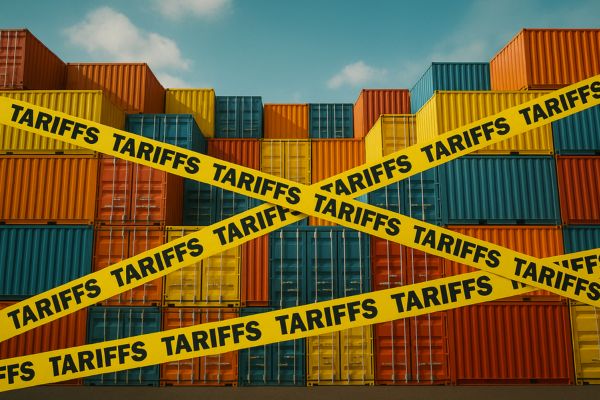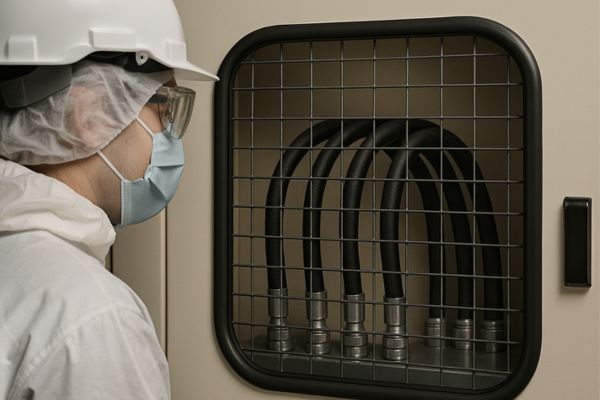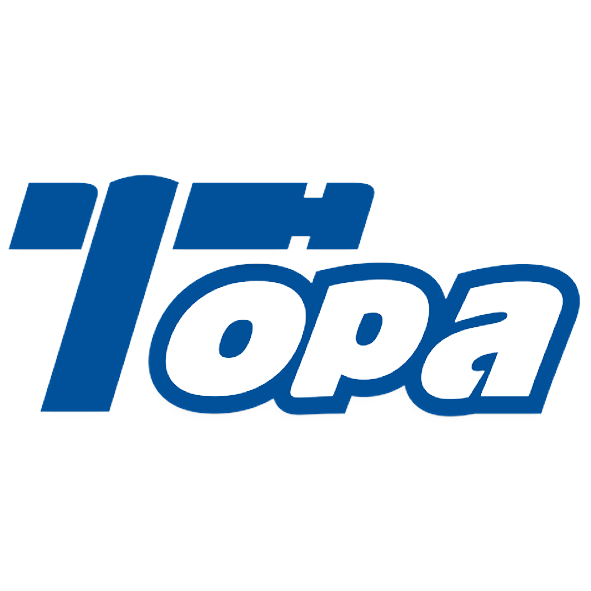In October 2025, the U.S. government imposed 100% tariffs on Chinese imports — a move that directly impacts the global hydraulic fittings and hose industry.
The Tariff Announcement and Its Immediate Implications

The 100% Tariff Explained
According to **Reuters (2025.10.10)**, the U.S. announced 100% tariffs on Chinese imports to “protect U.S. industry.” This measure marks a significant escalation from prior trade policies, targeting a broad range of industrial goods, including hydraulic fittings and hoses used in manufacturing, construction, and agriculture.
The Scale of Impact
The Financial Times (2025.10.10) reported that more than $150 billion in Chinese goods are affected — the largest escalation since 2018. Hydraulic components, which fall under steel and brass mechanical parts, are within this scope. Immediate consequences include cost surges, disrupted deliveries, and sourcing uncertainty for U.S. buyers.
Inflation and Global Supply Chain Disruption

Rising Import Costs and Inflation
Bloomberg Economics (2025.10.11) estimates the tariffs will push U.S. import prices up by **7%**, potentially lowering global GDP by 0.3% in 2026. In the hydraulic sector, that price spike translates directly into higher manufacturing and maintenance costs, as most fittings and hoses depend on Chinese machining and plating capabilities.
Supply Chain Fragmentation
Tariffs disrupt established logistics networks. U.S. importers are shifting sourcing toward Vietnam, India, and Mexico, but these countries lack China’s precision standards in machining, zinc-nickel plating, and assembly, creating inconsistencies in thread accuracy and hose crimping performance.
Market Impact Overview
| Impact Factor | Short-Term Effect | Long-Term Outcome |
| Import Prices | Surge by 15–30% in U.S. markets | Stabilization if new supply bases mature |
| Lead Times | Extended by 2–5 weeks | Reduced as regional networks grow |
| Quality Control | Drop due to rushed supplier shifts | Improved through partnerships |
| Customer Confidence | Erosion due to volatility | Restored via supplier transparency |
Operational Stress Points
Factories dependent on Chinese raw materials — carbon steel bars, brass billets, and coating chemicals — face shortages. Production delays in fittings and hoses ripple through construction, mining, and machinery industries globally.
Global Reactions and Industry Adjustments
China’s Response and WTO Implications
AP News (2025.10.11) quoted China’s Ministry of Commerce calling the move “a serious violation of WTO principles.” Retaliation has begun, including new port fees on U.S. ships. This adds non-tariff pressure to logistics, potentially increasing freight costs for hose assemblies by up to 20%.
Policy Confirmation and Legal Framework
The USTR (2025.10.11) published the new duty structure under Section 301 Tariff Actions in the *Federal Register*, cementing it as a long-term policy. Legal challenges via WTO may take years, meaning manufacturers must adapt rather than wait for relief.
The Reshaping of the Hydraulic Supply Chain

Shifts in Sourcing and Manufacturing
The 100% tariff has triggered a fundamental restructuring of how hydraulic fittings and hoses are sourced, produced, and distributed worldwide. For more than two decades, China has been the backbone of this industry, offering unmatched precision in CNC machining, zinc-nickel plating, automated hose crimping, and large-scale production efficiency. Now, that dominance is being challenged as U.S. buyers and global distributors urgently look for alternatives to avoid the new tariffs.
Southeast Asia—particularly Vietnam, Thailand, and Malaysia—has become the first destination for this redirected demand. These countries are rapidly scaling their manufacturing capacity through joint ventures, technology transfers, and government incentives. However, while their labor costs are competitive, their production ecosystems are still maturing. Critical challenges include inconsistent raw material quality, limited access to high-precision forging equipment, and less-developed testing infrastructure for pressure and salt-spray resistance.
Mexico, driven by its proximity to the U.S., is another strategic hub. Under the USMCA framework, hydraulic components produced or assembled in Mexico may qualify for reduced tariffs, offering U.S. buyers a partial escape route. However, limited domestic steel and brass supply, coupled with higher operating costs, still restrict Mexico’s scalability in this sector.
In contrast, Chinese manufacturers are not standing still. Many are adopting a “China +1” strategy—maintaining their domestic production for Asian and European markets while setting up satellite plants abroad for U.S.-bound orders. This allows them to preserve quality control, maintain brand trust, and reduce dependence on any single trade corridor.
Future Market Structure
| Market Segment | Key Characteristics | Price Trend |
| High-End Fittings (Stainless & Reusable) | Designed for extreme conditions and long-term use. Favored by OEMs and industries prioritizing corrosion resistance and precision. | Stable or Rising – demand grows despite higher costs. |
| Mid-Tier Components (Carbon Steel) | Cost-driven, widely used in construction and agricultural machinery. Sensitive to freight and raw material fluctuations. | Volatile – fluctuates with logistics and regional policies. |
| Low-End Imports | Low-quality, often non-compliant parts from unregulated sources. Risk of leakage, corrosion, and failure. | Declining – stricter inspections and customer awareness reducing demand. |
How Manufacturers Like Us Will Respond
Domestic Supply Chain Optimization
We are consolidating our partnerships with local raw material suppliers for carbon steel, stainless steel, and brass — ensuring that all bar stock and forging billets meet mechanical and chemical standards before machining begins. By working directly with certified mills and plating specialists inside China, we shorten delivery cycles, improve traceability, and reduce exposure to fluctuating import material costs.
Additionally, we’ve implemented a **tiered supplier evaluation system**, ranking partners based on their delivery accuracy, plating consistency, and dimensional tolerance stability. This data-driven assessment helps us identify weaknesses, provide technical feedback, and co-develop improvements in real time.
Our logistics chain is also undergoing digital optimization. Using ERP integration and smart warehousing, each batch of fittings and hoses can be tracked from forging to final shipment. This ensures zero mix-ups, zero missing items, and complete transparency for customers — even across multiple production lines.

Full Automation for Stability and Precision
The second pillar of our strategy is full automation. In a high-tariff environment, efficiency becomes the most powerful form of cost control. That’s why we are replacing manual operations with **CNC-integrated production, robotic assembly, and automated hose crimping systems**.
Our CNC centers are equipped with real-time dimensional feedback, capable of machining to tolerances below ±0.01 mm. Automated robotic arms handle repetitive assembly tasks such as nut installation, thread cleaning, and O-ring insertion — improving both accuracy and safety.
In the hose assembly section, AI-based crimping machines now adjust pressure and die settings automatically based on hose diameter and material hardness.
Building a Smarter, Stronger Domestic Manufacturing Network
By combining an optimized local supply chain with advanced automation, we are reinforcing our position as a reliable, self-sufficient hydraulic fittings manufacturer.
This strategy not only shields us from external policy risks like tariffs or shipping disruptions but also enhances our long-term competitiveness.
Our focus remains clear — **produce faster, test deeper, and deliver better**.
Quality and Traceability Focus
High tariffs and shifting supply chains have made one truth undeniable: trust is the new currency of global trade. In an environment where component origins may span multiple countries, we are reinforcing our quality assurance system with greater transparency and verifiable data.
We have implemented **ISO 9001 and ISO 14001-compliant traceability protocols**, covering every stage from raw material certification to final inspection. Each hydraulic fitting and hose assembly carries a unique traceability code linking it to its production batch, plating test results, and inspection records.
Our 100% inspection policy ensures that no fitting leaves the factory without passing dimensional, pressure, and plating integrity tests. For corrosion resistance, we maintain continuous **salt-spray testing cycles exceeding 96 hours**, simulating years of real-world exposure to harsh environments.
Ultimately, our response goes beyond survival; it’s about strengthening the foundation for the next era of hydraulic manufacturing. By combining technological precision, flexible supply networks, and uncompromising quality control, we ensure that our fittings and hoses remain reliable, compliant, and competitively positioned — no matter how trade policies evolve.
Long-Term Trends in the Hydraulic Industry
Sustainability and Material Innovation
The 100% tariff has forced both manufacturers and end-users to rethink the long-term sustainability of the hydraulic industry. Rising costs and trade barriers are pushing the market to adopt **longer-lasting materials, cleaner production methods, and smarter product design**.
In fittings, stainless steel is emerging as the new standard. Its superior corrosion resistance, strength, and temperature tolerance make it ideal for industries like marine engineering, construction, and oil & gas — sectors where component failure is unacceptable. The 316 stainless series is replacing lower-cost carbon steel, not just for durability but also for lifecycle economy: one stainless steel fitting can outlast three carbon steel fittings in harsh conditions.
Meanwhile, zinc-nickel coatings are becoming the preferred finish for carbon steel fittings. Offering over 720 hours of salt-spray resistance, this coating reduces maintenance frequency and environmental contamination from rust. It also eliminates the use of hexavalent chromium, aligning with RoHS and REACH environmental regulations.
Hydraulic hose manufacturing is following the same trend. The next generation of hoses will feature bio-based or recyclable inner tubes that reduce carbon footprint without sacrificing flexibility or pressure endurance. Advanced polymers like TPU and EPDM blends are being engineered to withstand hydraulic fluids while resisting UV damage and temperature extremes.
The future of hydraulic manufacturing will not be defined by who offers the lowest price, but by who can deliver durability, compliance, and environmental responsibility in a single product line.

Automation and Localization
While sustainability drives material innovation, automation and localization define the next competitive frontier. Western buyers — particularly in the EU and North America — increasingly demand traceable, precision-engineered components from suppliers capable of providing consistent quality documentation.
Automation is the foundation of this reliability. In leading Chinese factories, production is shifting from semi-manual processes to **fully robotic CNC lines, automated deburring, and AI-assisted quality inspection**. Each fitting is measured, tested, and serialized automatically, creating a digital production record that can be accessed by international clients.
These digitalized systems also enable **predictive maintenance and adaptive machining**, reducing downtime and ensuring every thread and sealing surface meets ISO 8434 and SAE J514 standards. By combining robotics and data analytics, manufacturers achieve both **scalability and consistency**, even across multiple production shifts.
In the long term, the hydraulic supply chain will evolve into a **globally distributed yet digitally unified system**. Core components may still be produced in China — where technical expertise and machining depth remain unmatched — but finishing, customization, and logistics will be decentralized.
For the hydraulic fittings and hose industry, this model blends the best of both worlds: the efficiency of centralized manufacturing with the agility of regional responsiveness. It’s a transformation that promises not only survival under trade pressure but also a stronger, more sustainable foundation for the decades ahead.
Navigating the Next Five Years
Forecast Summary
If the 100% tariff persists for 3–5 years, hydraulic fitting prices in the U.S. may remain **25–40% above pre-tariff levels**, while demand shifts toward premium and locally assembled products. Export-oriented manufacturers must align with regional partners, certification systems, and multi-origin strategies.
Competitive Outlook
- Short-term: U.S. distributors face squeezed margins and delayed orders.
- Mid-term: ASEAN countries rise as partial alternatives.
- Long-term: The most resilient companies are those that combine technical depth, flexibility, and trustworthiness.
In the next five years, the winners will not be those who compete solely on price, but those who combine engineering precision, transparent quality control, and sustainable practices. The hydraulic sector is evolving toward a future where reliability and trust outweigh short-term cost — and those prepared to adapt today will lead tomorrow’s market.
If you are looking for a dependable long-term supplier of hydraulic fittings, hoses, and custom assemblies, contact us today.
FAQ
Why does the 100% U.S. tariff have such a strong effect on hydraulic fittings and hoses?
Because over 60% of global hydraulic fittings and hose assemblies are sourced from China. The tariff directly increases landed costs, disrupts established supply chains, and forces U.S. distributors to find alternative suppliers — often at the expense of quality consistency and delivery speed.
How are Chinese manufacturers responding to the tariff challenges?
Instead of moving production overseas, many are optimizing their domestic supply chains and investing heavily in **full automation**. By upgrading CNC machining, robotic assembly, and digital quality tracking, they are maintaining international standards while avoiding reliance on foreign subcontractors.
What short-term market disruptions are expected after the tariff?
In the first 12–18 months, the industry will face price hikes of **15–30%**, extended lead times. Some smaller distributors may pause imports or shift to partial local assembly to manage cash flow.
How will this situation change the hydraulic industry over the next 3–5 years?
The tariff will accelerate the shift toward **high-end stainless steel fittings, zinc-nickel coatings, and sustainable hoses**. Automation and regional assembly hubs will become standard. The industry will evolve from cost-driven manufacturing to a model built on **traceability, durability, and compliance**.
What are the main advantages of working with automated Chinese manufacturers like Topa?
Automation ensures precise machining tolerances (±0.01 mm), consistent plating, and faster throughput. Combined with domestic supplier control and full traceability, manufacturers like Topa can deliver **stable quality, shorter delivery cycles, and tariff-resilient pricing**.
How can international buyers reduce their risks and maintain stable supply?
By forming long-term partnerships with manufacturers who have **integrated domestic production, verified ISO quality systems, and digital traceability**. Customers who collaborate early on inventory planning and customized packaging solutions can minimize both tariff and logistics risks.
Reference
- Reuters (2025, October 10). Biden announces 100% tariffs on Chinese imports to “protect U.S. industry.”
- Financial Times (2025, October 10). New U.S. tariffs affect over $150 billion worth of Chinese goods, marking the largest escalation since 2018.
- Bloomberg Economics (2025, October 11). Estimates show tariffs may push U.S. import prices up by 7% and global GDP down by 0.3% in 2026.
- AP News (2025, October 11). China’s Ministry of Commerce called the move “a serious violation of WTO principles.”
- USTR Office Release (2025, October 11). Federal Register published new import duty structure under “Section 301 Tariff Actions.”
- Al Jazeera (2025, October 13). Trump’s 100% tariff threat: History of U.S. trade measures against China.
- Yahoo Finance (2025, October 13). Trump tariffs live updates: China hits back at Trump with sanctions on U.S. shipping units.





